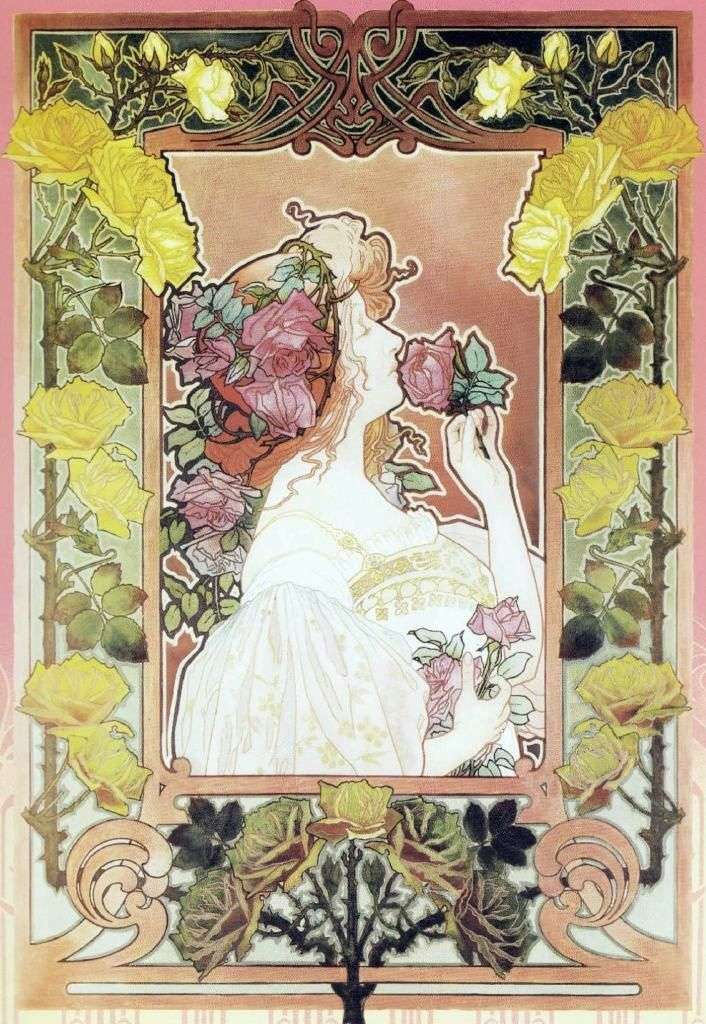
Henri Privat-Livémon worked almost simultaneously with Alphonse Mucha and shared with his Czech counterpart a commitment to the basic aesthetic principles of modernity. Both of them absorbed the style of Eugene Grasse, and then raised it to a higher level. Priva-Livemon was born in Skarbek, who was then a suburb of Brussels, studied at the School of Decorative Arts and wanted to be an expert in interior decoration. Then, having received a scholarship, he left for Paris in 1883. There he worked for some time as a theater artist, and in the evenings he studied at the school of fine arts. Then Priva-Levemon returned to Brussels and began working as a poster artist, lithographer and master of print.
An early poster of Priva-Livemona. The smell of a rose demonstrates his talent as a draftsman and colorist. In this work there are elements of the famous “whip-whip” pattern, which in general was the most characteristic element of the Art Nouveau style, especially in Belgium. The decorative language of Privat-Livemona finds the response of masters of applied art, in particular, from the French ceramist Pierre Adrienne Dalpeyra. Unlike his contemporaries, who loved to depict femmes fatales, Privat-Livemon preferred to present women rather relaxed and even lethargic.
Poster style The smell of a rose is distinguished by its originality – the artist not only introduces the principle of rigid contouring of forms, arising under the influence of Japanese art, but creates a double contour – white and dark, so the impression is that his figures are carved silhouettes. The poster is made in Art Nouveau style with characteristic lines of the ornament, with excessiveness overlapping plant and geometric shapes. The female type is devoid of any individual characteristics, and this is emphasized by the hairstyle treated in a completely abstract way in the form of a certain vegetative pattern. In many respects, Priva-Livemoven’s images resemble those of his contemporary Alphonse Mucha, however Priva-Livemon uses less bright and contrasting colors.
Since the mid-1890s, the work of Privat-Livemona has been developing in line with symbolism. He became one of the founders of the Skarbek Art Circle, whose goal was to organize exhibitions of the newest art and design in Brussels, as well as to acquaint the Belgians with modern styles. On the poster of Priva-Livemona for the 5th exhibition of this group, a young woman is presented, the image of which gives out narcissism. Narcissism was then in fashion and aroused keen interest among artists and writers.
This is especially true of Oscar Wilde and his novel Portrait of Dorian Gray. Symbolist artists, such as Edward Burne-Jones, in his work The Head of the Gorgon, also attracted this phenomenon. The new art should have interested many Belgians, who at that time were trying to turn away the pages of the history of their country, connected with France, and create a new independent nation. The king of Belgium, Leopold II, known as the “king of the builder”, was also the second monarch who ruled the country since its separation from France in 1830. T
In architecture no less, he preferred the French style of the Second Empire. This style was opposed by the recently emerged Belgian Workers’ Party, which was supported by the intelligentsia. The party encouraged young architects, such as Victor Orta, who sought to build public buildings, for example, the People’s House, and defended modern forms of architecture, contributing to the spread of Art Nouveau style.
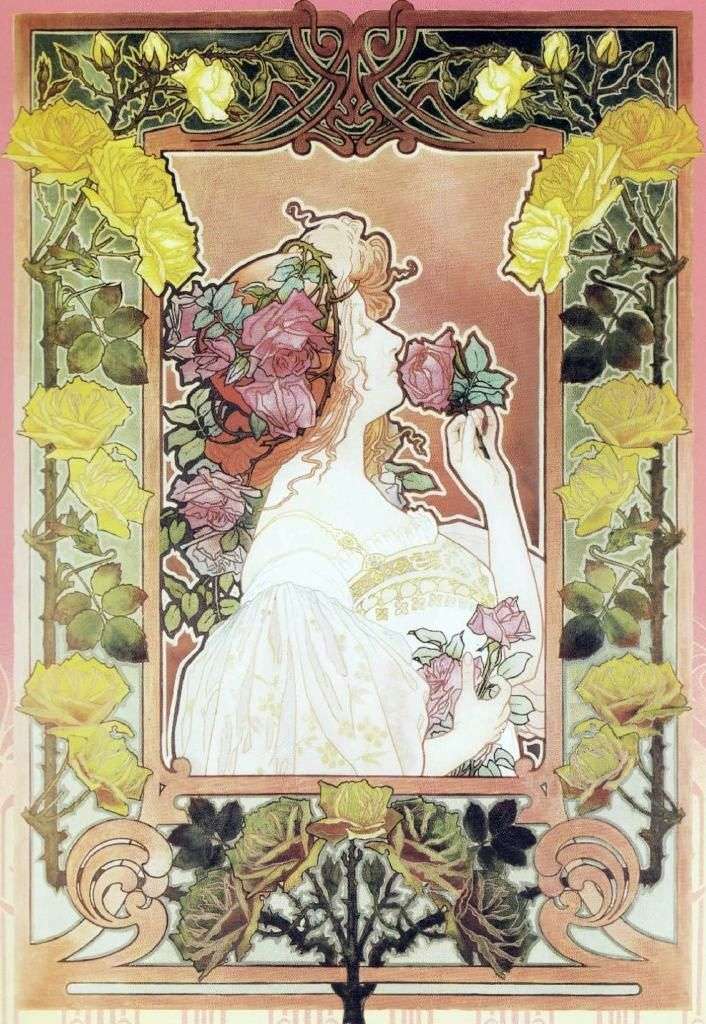 Vida y trabajo – Henri Privat-Livémon
Vida y trabajo – Henri Privat-Livémon Vie et travail – Henri Priva-Livemon
Vie et travail – Henri Priva-Livemon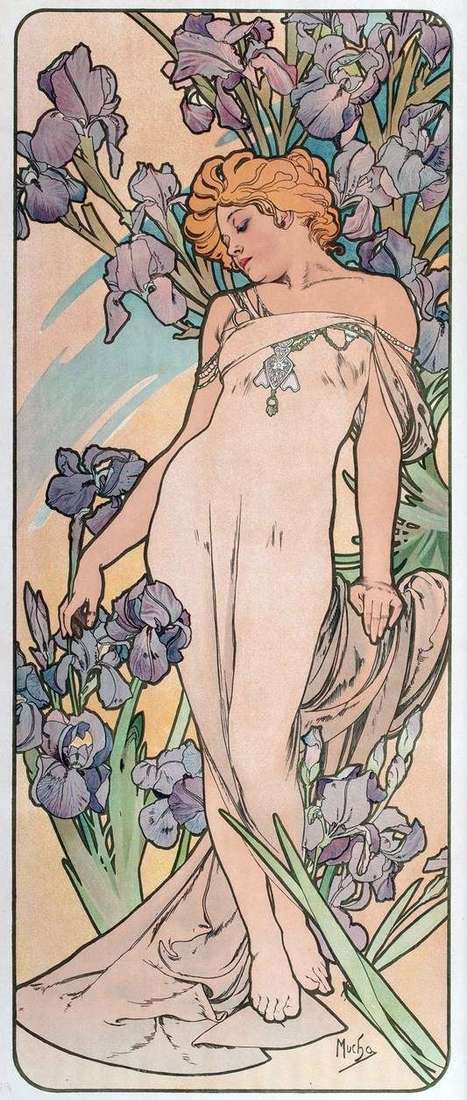 Iris by Alphonse Mucha
Iris by Alphonse Mucha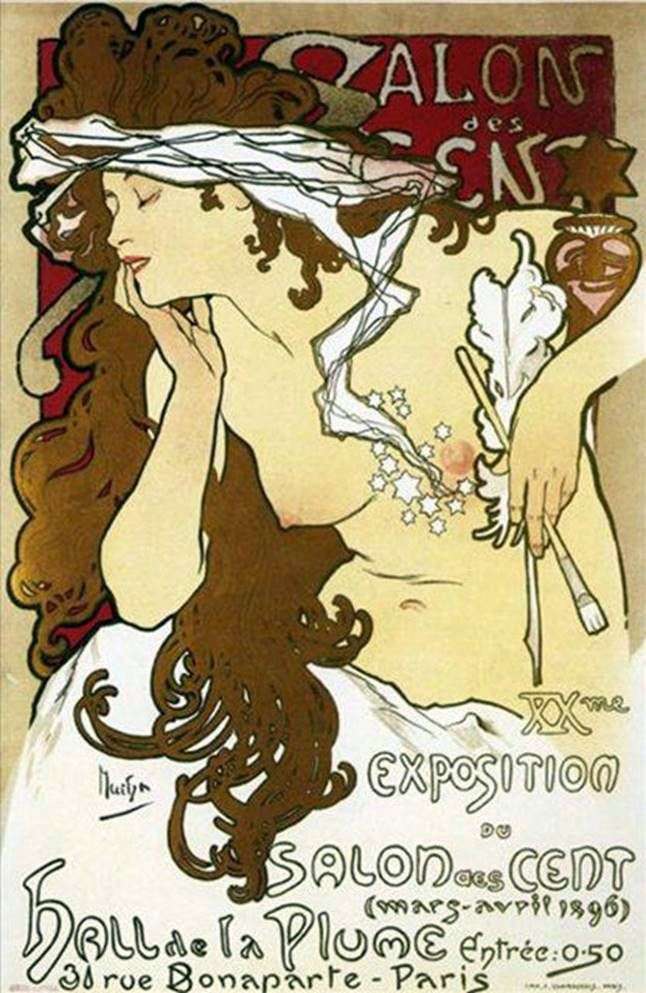 Poster XX exhibition Salon hundred by Alphonse Mucha
Poster XX exhibition Salon hundred by Alphonse Mucha Aristide Bruan in the Ambassador by Henri de Toulouse-Lautrec
Aristide Bruan in the Ambassador by Henri de Toulouse-Lautrec Jane Avril (Jane Avril in the Jardin de Paris) by Henri de Toulouse-Lautrec
Jane Avril (Jane Avril in the Jardin de Paris) by Henri de Toulouse-Lautrec Still Life with a Stage for Visiting Christ Maria and Martha in the Background by Artsen Peter
Still Life with a Stage for Visiting Christ Maria and Martha in the Background by Artsen Peter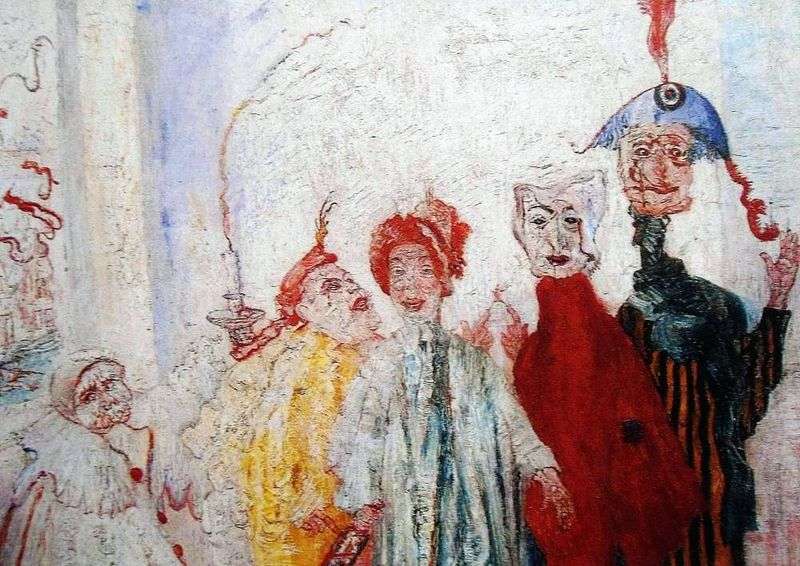 Strange masks by James Ensor
Strange masks by James Ensor